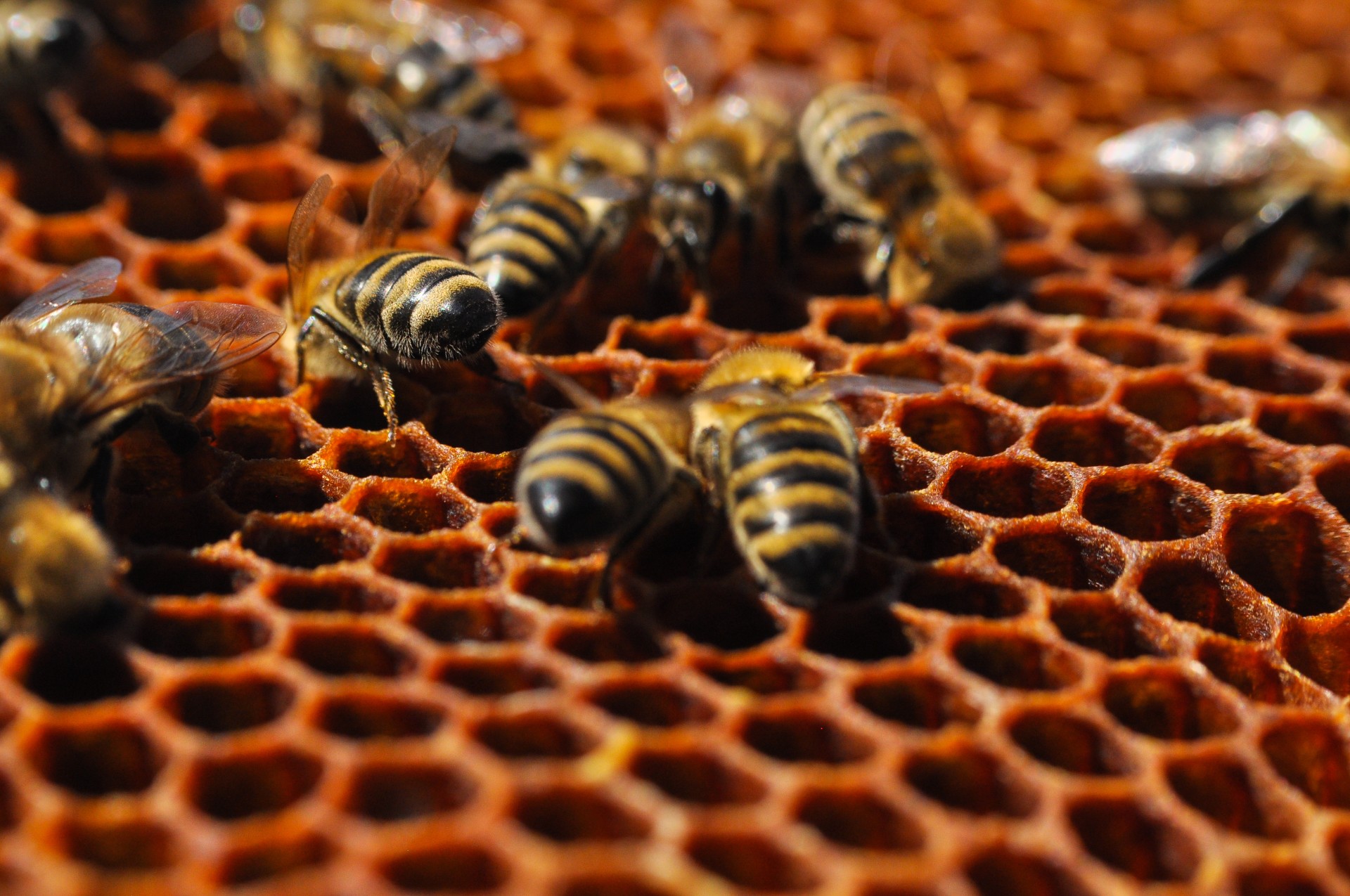If a beekeeper experiences colony loss, it may be due to the varroa virus-infected mites inside the hive. Mites are the cause of colony loss 90% of the time, and even if mites are not observed on the bees, varroa mites are lurking. When mites are in the free-moving phase of their life cycle, they easily transmit from bee to bee and between hives. Mites use their bodies and wedge between the adult bee's abdomen segments. If beekeepers see mites on the bees, a mite problem already exists, and immediate action must be taken.
Parasitic mite syndrome (PMS) occurs when a significant mite infestation increases the number of mites in the hive with the varroa virus. The bacteria and fungus from the infected mites make bees weak and ill. Bees' defense systems are weakened, and they are unable to defend themselves against other outside threats like wasps.
Identifying Varroa-Infected Hives
One way to identify a possible varroa virus in the hive is when bees appear greasy or shiny. The greasy look prevents bees from flying well, and they may appear to be trembling. Bees with shriveled wings or wings that are split apart are other signs of the varroa virus. If a queen bee develops and turns black, this is also a sign of the virus being active in the beehive.
Managing Mite Problems in the Hive
Since varroa mites are found in most beehives at some point, knowing how to manage them can save a colony. When it comes to managing mite problems, the only way is to reduce the number of mites in the population. Unfortunately, once mites are discovered and confirmed in the hive, the colony may not be salvageable without using chemicals. Prevention of growing populations of mites is the surest way to keep varroa mites away. Beekeepers are tasked with finding a proactive approach without the overuse of miticides, which is best, so mites are not able to get a foothold. This is how experienced beekeepers can prevent the breeding of stronger and stronger mites. Mites can't be avoided entirely in hives. Exterminating all mites may cause irreversible damage and is not sustainable, so preventing extreme population growth is the best course of action. Managing mite populations is something all beekeepers deal with, and sharing of information can make the task more manageable.
Staying on Top of Mite Populations
Once mites reach numbers that threaten the beehive, the colony's survival hangs in the balance. At this point, beekeepers may attempt to reduce the number of mites through environmental changes, and in some cases, chemical treatment is necessary. Because the number of mites will vary during the season, beekeepers can choose the ideal time to address mite population concerns. As part of mite control, measurement should be routine and done at least once heading into summer and once in the fall, with regular monitoring and continued treatment once introduced. Monitoring to confirm if treatments are impacting the mite populations within the hive is crucial. If not, beekeepers must take additional measures to address mite concerns.

Get help with your beehive or bee swarm removal! Call Today 760-224-3040 Or 951-265-8292!
Measuring Mite Activity in the Hive
As with most beekeeping rules, there is nothing that works for every beekeeper and every hive. To determine acceptable mite populations, beekeepers must consider the colony's size, whether the hive is in a broodless phase, and the hive’s hygiene. Mite populations exist in almost every hive, so there are mite infestations that beekeepers accept as normal. If mite rates stay below 3% in the spring and fall and 5% in the summer, mites should not threaten the colony’s survival. There are several techniques beekeepers use to check for mites, and connecting with other beekeepers in the area may provide additional insight into which approach yields the best results.
- Catching Mites in Sticky Boards—The most popular technique for monitoring mites is using sticky boards. Coating a board with Vaseline traps mites that fall to the bottom of the hive, and this way, they can be counted. Monitoring and counting should be done over at least two weeks to accurately determine if there is a problem.
- Sugar and Alcohol Washes in Jars - Jar methods of mite counting require more prep from the beekeeper and can be stressful to the bees due to the required shaking after covering them in sugar, but this does not kill the bee sample. Bee samples must be taken for sugar coating and alcohol wash monitoring, but alcohol washes will kill the bee sample. Although this may seem harsh, it provides a more accurate count and is an accepted sacrifice to catch a mite problem.
If the mite count exceeds the suggested percentages above, no further action is needed until the next mite monitoring beekeepers perform. Action must be taken if the mite count is high related to the acceptable numbers. Although beekeepers prefer to use organic methods, sometimes, miticides are necessary to protect the colony.
If you have questions about beekeeping, contact D-Tek today to connect with a professional and experienced beekeeper. Finding ways to keep beekeeping enjoyable is an essential part of this trending hobby!
If you need help with something related to bees, you only need to make one call, which is to D-Tek 760-224-3040.
